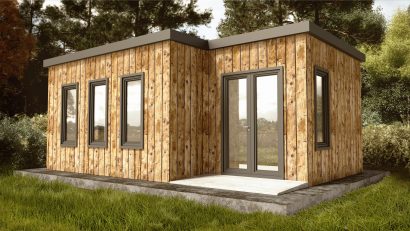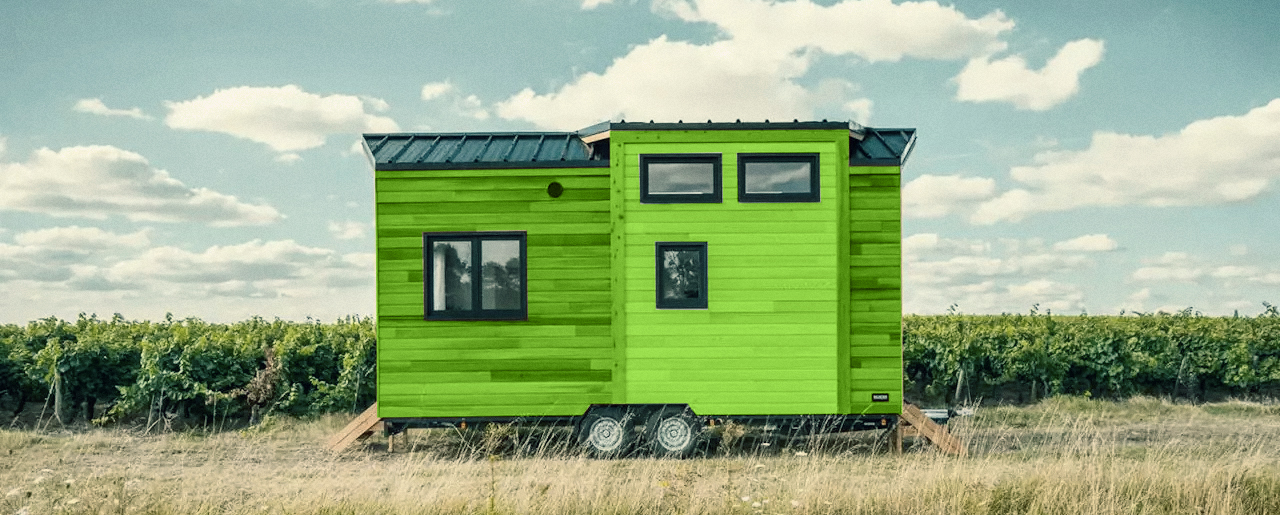The concept of tiny houses (or micro-houses) emerged in 2008 in the United States while the country was experiencing a severe economic crisis. At the time, the idea was to make home ownership more accessible, even to the most modest households. Today, the American concept of tiny houses has made its way to Quebec, and more and more mini-house housing projects are being developed across the province.
In this article, Assurances Multi-Risques would like to tell you about these ultra-trendy micro-homes and explain the different types of home insurance coverage available for tiny houses!
What is a tiny house?
A tiny house (or tiny cottage) is a dwelling with less than 1,000 f2 of living space (most models range from 300 to 500f2) and can be either stationary (built on a foundation) or mobile (like a trailer).
Such a home is very advantageous from an economic and ecological point of view, as it consumes very little energy for heating in particular, and requires far fewer materials for its construction. Not to mention all the money saved on taxes, maintenance, furnishings, or simply the purchase price!
So despite its small size, it has very little to envy in larger homes. Tiny houses offer a small, warm, and welcoming space, perfect for a single person, a couple, or a small family! Some models are breathtaking and remind us of those cozy little cabins we dreamed of living in when we were young!

Regulations and laws surrounding the construction of tiny houses
In Quebec, very few municipalities currently agree to issue building permits for tiny houses. This is mainly for financial reasons (small houses = low property taxes), but it should also be noted that Quebec’s national building code does not cover dwellings smaller than 700 square feet.
In addition, Quebec provincial regulations on building construction and conversion prohibit the construction of buildings smaller than 275 square feet for a studio, and smaller than 320 square feet for a single-family home with one bedroom. Municipal zoning regulations generally determine the minimum size of a house per sector, which often requires an administrative exemption process. It is also prohibited to install a tiny house as a residential annex on land that is already built on.
But thanks to the growing popularity of this concept of energy-efficient mini-homes, more and more municipalities are accepting these projects. In the Eastern Townships, we find such developments in Farnham, Knowlton, Granby, Saint-Étienne-de-Bolton, Drummondville, and even in Sherbrooke with Le Petit Quartier, a cooperative of mini-home owners.
What type of insurance is needed to cover a tiny house?
Like any valuable asset, it is important to properly insure your tiny house to avoid problems in the event of a disaster.
Si vous souhaitez installer votre petite habitation sur un terrain de façon permanente, que ce soit à titre de résidence permanente ou comme chalet, vous devrez souscrire à une assurance habitation standard, adaptée à vos besoins.
Vous désirez plutôt une mini-maison sur roues afin de pouvoir vous déplacer au gré de vos envies ? Il vous faudra alors souscrire à une assurance pour véhicule récréatif ou une assurance caravane (si vous prévoyez déplacer votre mini-maison une fois ou moins par année). Celle-ci devra également être immatriculée auprès de la SAAQ, toute comme une roulotte. N’oubliez pas que si vous ne possédez aucun domicile fixe, il est important d’acquérir un contrat d’assurance nomade qui vous protégera d’un point de vue « responsabilité civile », laquelle serait présente en temps normal dans un contrat d’assurance habitation.
Finally
Bien qu’elles soient petites (et surtout très charmantes!), les mini-maisons méritent la meilleure des protections. Si vous souhaitez obtenir plus d’information à ce sujet ou si vous souhaitez faire une demande de soumission, n’hésitez pas à contacter l’un de nos courtiers spécialisés en assurance habitation et véhicule récréatif! Il saura vous éclairer et vous aider à faire le meilleur choix vous concernant! Bas prix garanti!
